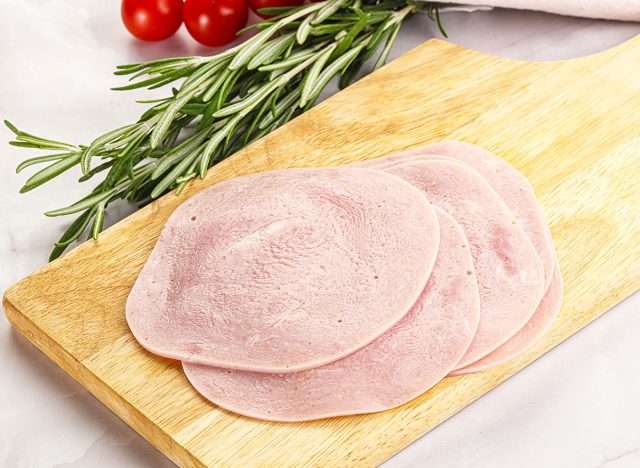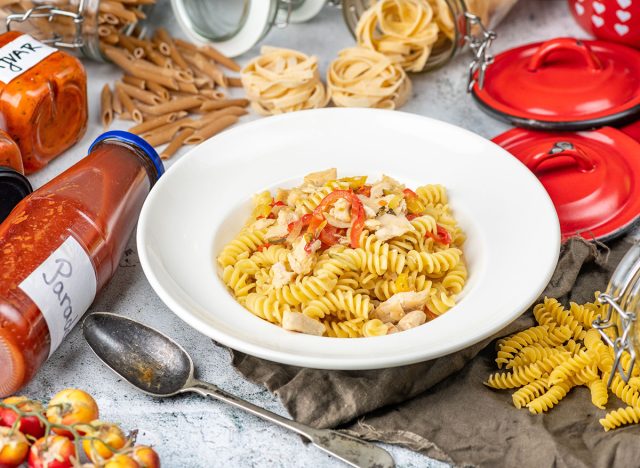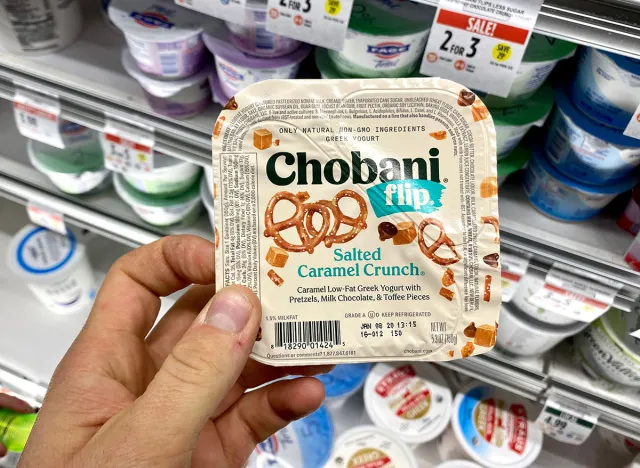What a Nutritionist Eats in a Day for Fat Loss
Do you ever wonder what fitness experts and influencers eat to stay fit? Jamie Michele (@jamiemiichele) is an online coach and food and fitness expert whose goal is to help her clients become the healthiest version of themselves without going to extremes. In one viral video, she reveals everything she eats in a day, including a lot of protein. "Here's a realistic 'what I eat in a day for fat loss,' which means no boring chicken, broccoli rice to stay on theme," she says, revealing her menu, which boasts a whopping 160 grams of protein. You might be surprised by how much she can eat and still burn fat – and what The Diet Diva, Tara Collingwood, MS, RDN, CSSD, LD/N, ACSM-CPT, a Board Certified Sports Dietitian has to say about it.
Breakfast: Chocolate Covered Strawberry Smoothie Bowl
@jamiemiichele Try putting more calories into the meals and less snacks and it will really help you to stay on track with calories #whatieat #whatieatinaday #fulldayofeating #highprotein #highproteinmeals #macrofriendly #weightloss #fatloss #healthyrecipes #easyrecipe ♬ Hiphop/Chill/Lo-Fi(850064) – HomeMadeGarbage
She starts with a "chocolate-covered strawberry smoothie bowl for breakfast," which offers 43 grams of protein. Some of the ingredients include Fairlife chocolate protein milk, protein powder, berries, and yogurt. "I've been adding sugar-free jello to my smoothies, and it helps so much with flavor. This is also a really good way to hide your protein powder, and I just topped mine with some strawberries and no sugar-added chocolate chips," she adds.
Snack: Cottage Cheese

"For a snack, I had some cottage cheese," she says, holding up a container of Breakstone's that has 12 grams of protein. "I know this sounds crazy, but for some reason, this brand tasted like I was just eating a cup of creamy feta cheese. It was so good," she says.
Related: I Lost 42 Pounds 8 Months with Keto and Weight Lifting
Dinner: Chopped "Sub in a Tub"

"Then for lunch, I made a chopped 'sub in a tub' grinder sandwich little salad thing," she says. "I already made a video on this, but this is such a good recipe to make in under 10 minutes, super fresh." She claims that the mixture, which includes things like ham, pickles, lettuce, and cheese, offers 43 grams of protein. "The only thing that sucks is cleaning the stupid chopper," she admits.
Dinner: Viral Feta Pasta with Chicken

"Then for dinner, I made the viral feta pasta, except more macro friendly, so higher in protein, lower in fat, and then just grilled some chicken to put on top," she says about the meal, which offers 49 grams protein. "The best part is always mixing around the feta and the tomatoes, and it's going to seem liquidy, but I promise to keep mixing, and it'll get super creamy. I love this because it is so easy to meal prep, and it heats up amazingly."
Dessert: Chobani Flips

"Then, for dessert, I've been loving these Chobani Flips. I just tried them for the first time last week, and this one and the maple are my favorite so far," she says about the 9 grams of protein sweet treat.
Related: Here's How to Drop 1 Pound Per Week by Just Walking, Says Camila Cabello's Trainer
RDN Weighs In

Should you follow a diet like this? "Most women are not going to need anything close to 160 grams of protein," comments Collingwood. "This diet is very high in protein and appears to be pretty low in carbohydrates, especially from any whole grains," she adds. "I suggest reducing the protein to about 100 to 110 grams and adding more fruits, veggies, legumes, and some whole grains."
💪🔥Body Booster: Before you put together a diet or meal plan, take time to calculate your caloric and nutritional needs to ensure you are eating the right amount of protein, carbs, and fiber for your gender and body weight.





